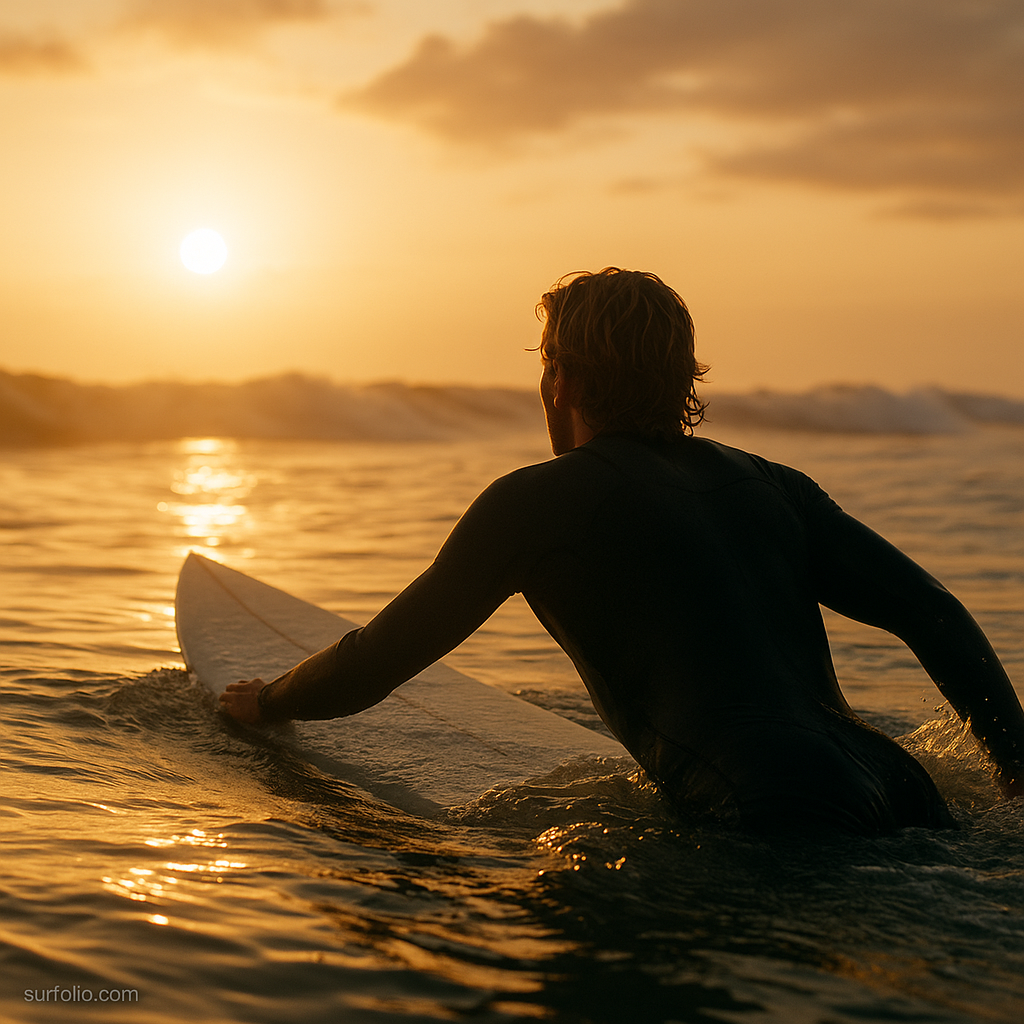
For surfers, the ocean is more than a playground — it’s a living, dynamic environment that can dramatically influence how your body performs. Among all the variables in the water, temperature plays one of the biggest roles in shaping your energy, reflexes, and endurance.
Understanding how water temperature affects performance helps you adapt your surf routine, choose the right gear, and optimize your time in the lineup — whether you’re paddling through icy breaks or gliding in tropical warmth.
The Science Behind Water Temperature
Water conducts heat 25 times faster than air, which means your body loses warmth quickly, even in conditions that might feel mild on land. When you’re surfing, this thermal exchange directly impacts your muscle function, stamina, and mental clarity.
As your body temperature drops, blood flow shifts inward to protect vital organs, reducing circulation to your extremities — precisely where you need agility for paddling and balance. Conversely, overly warm water can cause overheating, fatigue, and slower reaction times.
The sweet spot for most surfers? 60°F–75°F (15°C–24°C) — where the body can perform efficiently with minimal energy loss.
Cold Water: The Performance Challenge
Cold water surfing tests both physical and mental endurance. While it sharpens focus and builds resilience, it also places unique stress on the body.
How cold water affects performance:
- Reduced muscle efficiency: Muscles contract slower in cold conditions, leading to slower paddle strokes and delayed takeoffs.
- Decreased grip and flexibility: Fingers and toes stiffen, making it harder to pop up or adjust foot placement.
- Increased calorie burn: The body expends more energy maintaining warmth, leading to quicker fatigue.
- Mental effects: Exposure to cold triggers the “cold shock” response — rapid breathing and elevated heart rate, which can disrupt rhythm and concentration.
However, with proper adaptation, cold water can enhance performance over time. Studies show that regular cold exposure improves circulation, oxygen efficiency, and recovery — key benefits for surfers pushing through winter swells.
Warm Water: Comfort with a Catch
Warm water might feel like a surfer’s paradise, but it brings its own set of performance considerations.
How warm water impacts performance:
- Increased muscle flexibility: Easier paddling, smoother movements, and better flow.
- Prolonged stamina: Less energy spent regulating body temperature.
- Faster recovery: Warmth promotes better blood flow and muscle elasticity.
However, the downsides include:
- Dehydration risk: Warm water combined with sun exposure can deplete fluids faster.
- Overheating: Especially in full tropical wetsuits or rash guards.
- Slower reflexes: Heat fatigue can reduce reaction speed during long sessions.
The key is hydration and moderation — drink plenty of water and balance comfort with awareness of your body’s limits.
Optimal Gear for Every Temperature
Your performance isn’t just about physiology — it’s also about preparation. Choosing the right gear helps maintain ideal body temperature and efficiency.
Cold Water (Below 60°F / 15°C):
- Wetsuit: 4/3mm to 6/5/4mm, depending on severity.
- Booties, gloves, hood: Prevent heat loss through extremities.
- Pre-surf warm-up: Dynamic stretches and short jogs to raise core temperature.
- Post-surf recovery: Warm shower and hydration to stabilize blood flow.
Moderate Water (60°F–70°F / 15°C–21°C):
- Wetsuit: 3/2mm or spring suit.
- Optional accessories: Thin booties or vest for wind protection.
- Stay active: Continuous paddling maintains warmth without overheating.
Warm Water (Above 70°F / 21°C):
- Wetsuit: Boardshorts, rash guard, or thin neoprene top.
- Hydration: Electrolyte drinks before and after surfing.
- Sun protection: Zinc-based sunscreen or surf hat to prevent heat fatigue.
Proper gear keeps your muscles operating at peak performance by balancing insulation and mobility.
Performance and Wave Dynamics
Water temperature also affects wave energy and density, which influences how your board responds. Cold water is denser than warm water, providing slightly more buoyancy and lift. This means:
- Boards feel a bit faster and more responsive in colder water.
- In warm water, the lower density can make boards feel slower or less buoyant, especially with heavy wetsuits or added gear.
Some surfers even fine-tune their board choice based on temperature — opting for slightly more volume in warm, less dense waters to maintain drive and glide.
Training Your Body to Adapt
Your body is remarkably adaptable, and you can train it to perform better in different temperatures.
For cold water:
- Gradual exposure: Start with shorter sessions and increase over time.
- Breathing control: Practice slow, steady breaths to combat the shock response.
- Nutrition: Focus on calorie-dense foods before surfing to fuel heat production.
For warm water:
- Pre-hydrate: Begin hydrating the night before a session.
- Pace yourself: Avoid overheating by taking breaks between sets.
- Post-surf recovery: Use cool rinses and replenish electrolytes.
Adaptation builds not only endurance but also mental toughness — essential traits for consistent performance year-round.
The Mental Factor
Water temperature doesn’t just affect the body — it shapes your mindset. Cold water often fosters discipline and focus, while warm water encourages relaxation and creativity. Many professional surfers train in both extremes to balance grit with flow, building a stronger connection to the ocean in all conditions.
Knowing how your mind reacts to environmental stress helps you stay composed, aware, and adaptable — whether you’re paddling through icy peaks or basking in tropical reefs.
Final Thoughts
The ocean’s temperature is more than a background detail — it’s a defining element of your surf experience. Cold water sharpens resilience, warm water enhances flow, and both test your ability to adapt.
By understanding how temperature affects performance and preparing accordingly, you’ll surf with greater awareness, endurance, and confidence — in any condition, anywhere in the world.
